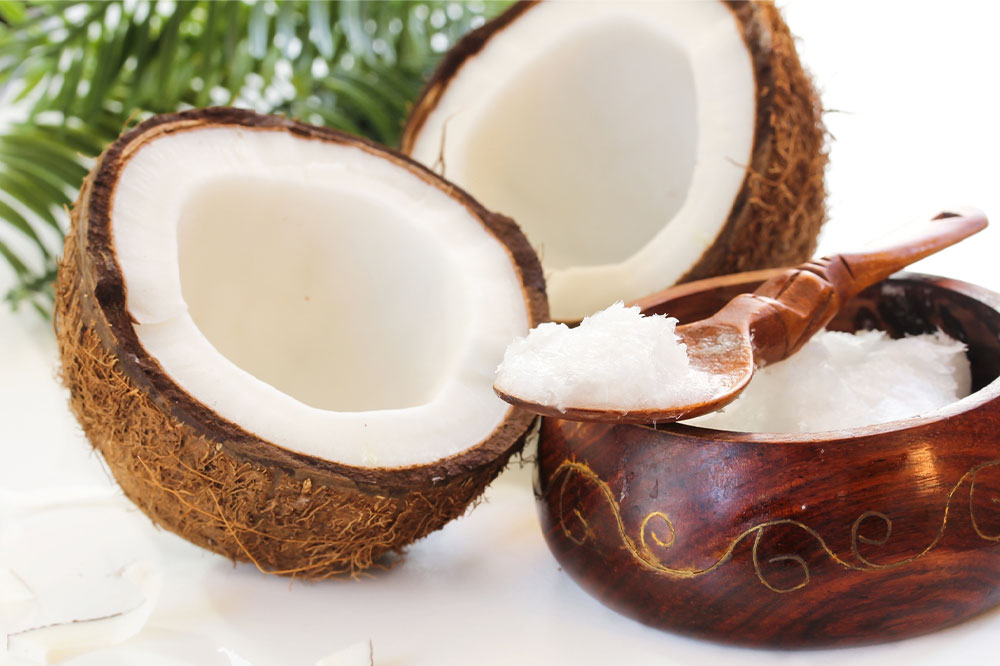Foods That Help Control Eosinophilic Esophagitis

Eosinophils are white blood cells in the immune system that ward off external attacks and protect the body from diseases. However, some allergic reactions trigger an unprecedented increase in the production of these cells. Eosinophilic esophagitis (EoE) is an allergic reaction that causes inflammation and swelling in the esophagus. Many risk factors are involved, but certain foods mainly trigger this allergic response. Here are common food substitutes that help manage EoE and prevent major flare-ups.
Milk substitutes
Milk contains a natural protein called casein that triggers an allergic reaction to the condition. People who are lactose intolerant are anyways unable to process any dairy. The top culprits include milk in all its forms, butter, margarine, cheese, yogurt, sour cream, mayonnaise, and salad dressings. These are all trigger foods that need to be eliminated. Nutritionists advise switching to more safe alternatives like coconut milk, hemp milk, oat milk, almond milk, and rice milk. These fortified substitutes eliminate the dairy digestion problem while retaining a balanced nutritional value. Further, one can switch to dairy-free yogurts and cheeses made from coconut, cashew, or hemp milk for regular intake.
Eat gluten-free snacks
Gluten is a protein commonly found in grains like wheat, barley, and rye. In general, gluten does not add any nutritional value, and most people can digest the protein without any severe side effects. However, people who develop a gluten intolerance may suffer from an autoimmune response upon eating these foods. Avoiding this protein can prevent eosinophilic esophagitis flare-ups, as it is a direct trigger associated with the condition. There are many acceptable store-bought gluten-free bread, pasta, cereals, crackers, and wraps to try instead.
Switch to wheat substitutes
Since eosinophilic esophagitis is an allergic condition, substituting wheat and wheat products for healthier options can manage the inflammation and prevent the condition from worsening. For example, having oats for breakfast has several potential benefits. The gluten-free grain is a rich source of vitamins, minerals, antioxidants, and fibers. Barley is a rich source of calcium and fiber minus the extra calories that trigger health complications. Quinoa, an essential plant-based protein rich in amino acids, is also gluten-free. And tapioca is a natural starch with no fats and minimal sodium safe for some recipes.
Include more animal meats
Poultry, seafood, and meats are rich sources of protein. But many commonly eaten fish and meats contain protein compounds that can trigger inflammation and swelling of the esophagus. The allergic reaction is mainly due to an intolerance. It is one of the main reasons nutritionists advise eliminating all fatty fish, shrimp, lobster, crab, oysters, clams, mussels, and scallops. Basically, if caught in the sea, it’s best to eliminate such proteins. Instead, animal meats, including beef, pork, bison, venison, and lean sources of proteins like chicken and turkey, are acceptable substitutes. Of course, one must eat these meats in moderate amounts since these cuts are fatty and take longer to digest.
Eliminate some nuts and seeds
Most tree nuts, including walnuts, Brazil nuts, hazelnuts, almonds, cashews, and pistachios, should be avoided as part of the elimination regime for eosinophilic esophagitis. Nut butter, nut extracts, or cold-pressed oils are not advisable as the compounds can trigger an inflammatory and allergic reaction. However, there are some acceptable choices, like macadamia and pine nuts, that patients can tolerate to a certain extent. The same goes for seeds like dried pumpkin, sesame, and sunflower seeds. Chia, flax, and hemp seeds are acceptable substitutes for some recipes.
How an elimination meal plan helps manage EoE
The basic idea of following an elimination regime is to ensure there is no adverse inflammatory reaction upon digesting common sources of proteins and carbohydrates. Inflammation increases the eosinophils count in the body, advancing the risk of eosinophilic esophagitis or eosinophilic asthma, a similar chronic condition affecting breathing.
Official information on eosinophilic esophagitis
Doctors will conduct additional diagnostic tests to check the progression and severity based on the eosinophils count. Studies have been held to understand the increase in eosinophil counts linked to thyroid gland activity. Certain underlying autoimmune diseases and chronic disorders can disrupt the thyroid gland function and increase the impact of damage to the esophagus. However, there is inconclusive proof that other chronic ailments can trigger symptoms and discomforts linked to eosinophilic esophagitis.
Treatment options
Doctors will first ask about medical history and discuss the current symptoms to understand disease progression. It is necessary to eliminate overlapping symptoms linked to similar disorders. Further, an upper gastrointestinal endoscopy is done to visually check for inflammation in the esophagus. During the endoscopy, a small tissue will also be extracted for lab testing and analysis. Further blood tests might be done to assess any underlying allergic triggers that can worsen the symptoms.
There is no cure for the condition. FDA-approved prescriptions, elimination meal plans, and lifestyle changes can be done to prevent further damage and improve quality of life. Doctors usually start with a combination of topical or oral prescriptions to counter the inflammation and relieve pain. In addition to these prescriptions, certain acid suppressors can help with acid reflux and prevent frequent flare-ups. Following an elimination food regime and healthy lifestyle habits will help reduce the redness and swelling caused by repeated inflammation and reflux.
Understand that the scope of progression, treatment options, and general outlook for managing eosinophilic esophagitis varies significantly from person to person. While changing the daily meal plan will help prevent flare-ups, no two elimination patterns will be similar. Factors like age, disease history, existing health complications, disease intolerances, and even personal preferences will play a crucial role in determining the future outlook for disease management. The same is also applicable to suggested prescriptions and treatments. The timeline of outcomes will also vary depending on these crucial factors, with regular modifications done to the approach for eosinophilic esophagitis treatment.
















